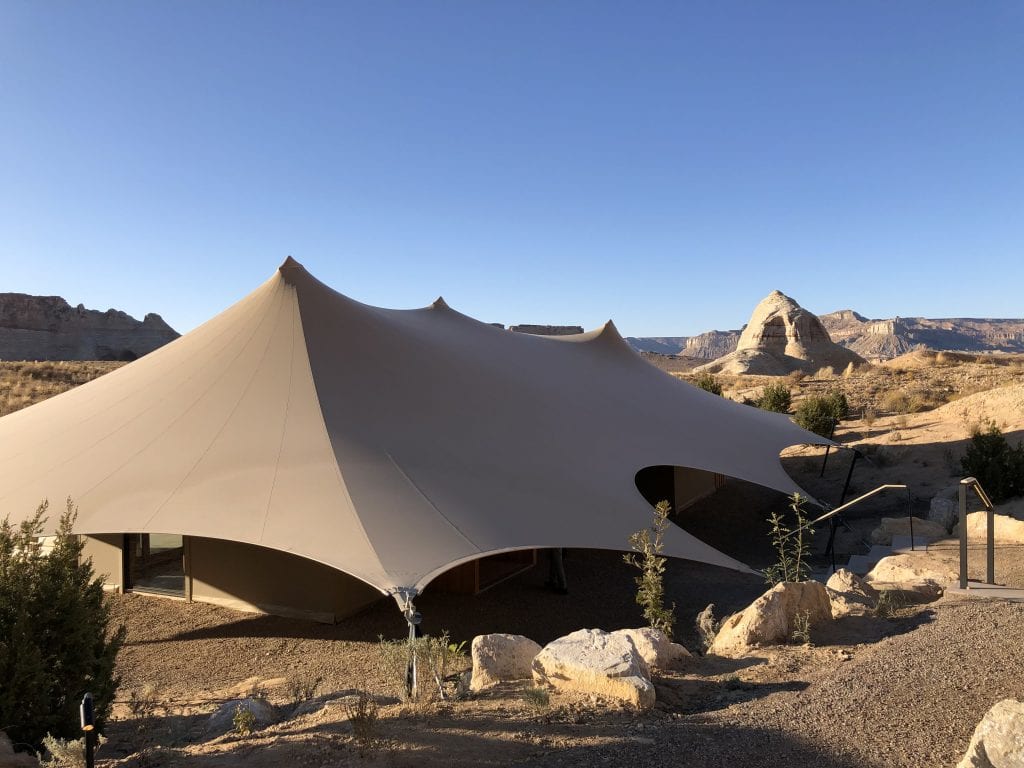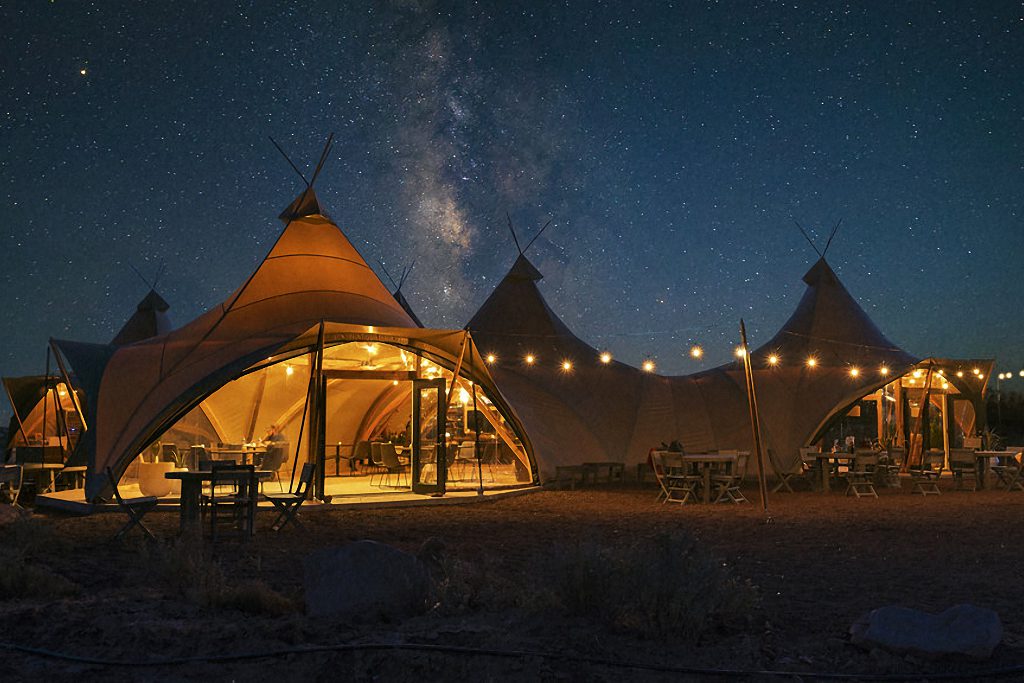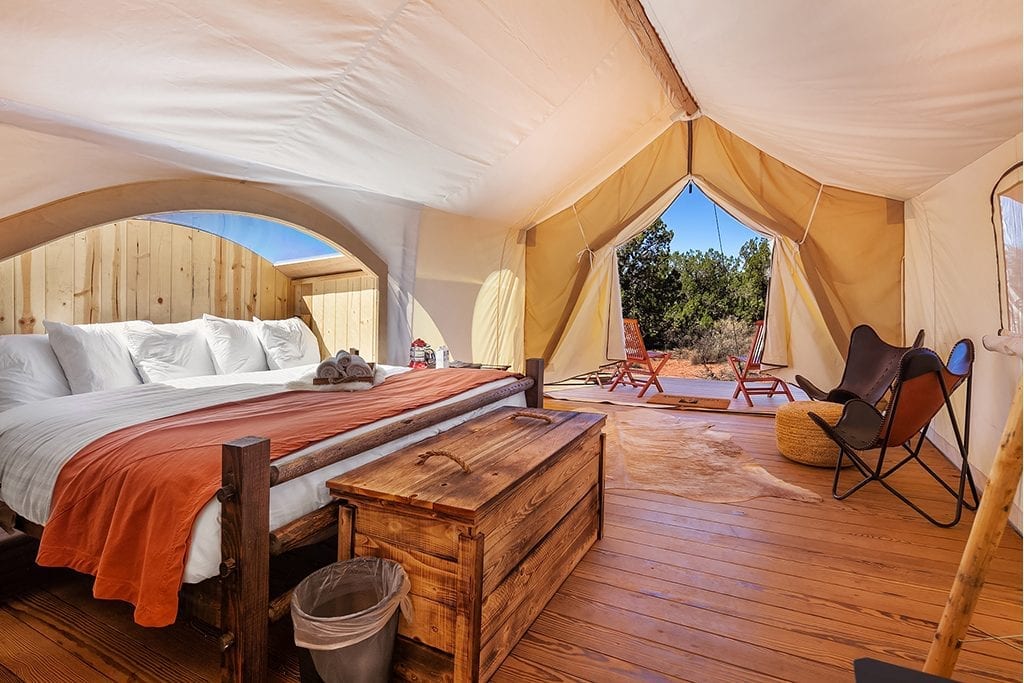Skift Take
A lot of nature-centric hospitality experiences got lumped under the "glamping" moniker and seemed frivolous as a result. But the space is growing because luxury travelers like the ability to be closer to nature without sacrificing creature comforts.

On Experience
Colin Nagy, a marketing strategist, writes this opinion column for Skift on hospitality and business travel. On Experience dissects customer-centric experiences and innovation across the luxury sector, hotels, aviation, and beyond. He also covers the convergence of conservation and hospitality.
You can read all of his writing here.
Some unconventional, nature-centric experiences got lumped under the unfortunate trend word “glamping.”
For many, it was easy to write off, and it seemed like an unnecessarily fussy version of camping in the outdoors for people that didn’t want to be bothered with some of the rougher edges of sleeping in the wild. But if you double-click on the trend, these unconventional approaches to lodging are gathering steam and resonating with the modern consumer.
The reason? Luxury consumers are seeking a yin-yang balance and reveling in high-low opposites. As Argentine chef Francis Mallmann said in a prescient interview years ago: “I think human beings need contradictions. We need opposites. We need to sleep in a five-star hotel and we need to sleep under a tree. The distance and the difference between those two extremes are what makes us happy and what makes us think and what makes us grow. If you only sleep under a tree, it’s quite sad. If you only sleep in a five-star hotel, it’s extremely sad too. So, I think that we need those contrasts in life — in every way!”
These types of tented experiences allow travelers a more sensory experience. You feel like you’re more deeply communing with your environment. The sounds are more vivid, you see the stars from your tent, and you feel the environment more intensely, even a small drop of rain from time to time. This is not to say that the surroundings are austere, on the contrary, many of these new lodgings offer plush linens and comfortable beds, and none of the frustrations that come with a more basic setup.
One of the new players, Under Canvas, has been launching tented camps in areas such as Yellowstone, Moab, Glacier National Park, Mount Rushmore, and more. In addition to the actual experience of sleeping under the stars, separated by a piece of canvas, another big part of the appeal is environmental responsibility.
These types of hospitality experiences have a lower footprint and lesser environmental consequences on the land. Sarah Dusek, co-founder and CEO of the brand, told me her tents “are constructed and taken down by hand each season, and our design concept allows us to leave the land as untouched as possible. A minimal footprint is what we are all about. Equally, we use 87 percent less water and 84 percent less energy than a hotel of comparable size.”

Camp Amangiri in Utah is Aman’s first foray into tented accommodations. Photo: Luxury Frontiers/Aman
Even the super-high-end hospitality brands are getting in on the trend. Aman in April 2020 is set to launch Camp Sairika, close to its iconic Amangiri property in remote Utah. The appeal is the attention to detail of the brand coupled with a back-to-nature approach that promises something more meditative, set among a “600-acre landscape of towering mesas, slot canyons, and rust-colored sands.” Nature is the backdrop and your relationship to it is different than if you were to view it through glass, in the removed confines of a resort.
Another example of luxury tented camps is Hoanib Valley Camp in Namibia. It is situated in a sheltered valley against a backdrop of granite mountains with views down to the Hoanib River. The Namibian landscape is harsh and unforgiving yet beautiful, and the camp’s design intention was to simply disappear and be unobtrusive within the natural surroundings.
African safari brand Singita has a roaming camp in its Serengeti concession, called Explore, that can be rented exclusively. It is designed for private use and accommodates a maximum of six tented suites catering for families or friends, pitched and set up based on the requirements of each traveler.
The camp is staffed with a private field guide, chef and host. It offers a completely different experience to their other physical lodges nearby, in that you are on the floor of the Serengeti and in the thick of the action, especially around the migration.
But the appeal of this luxury movement toward the sensory is not just based on canvas and tents. There are other approaches at play. AutoCamp positions beautiful Airstream trailers in highly scenic natural locations, complete with a small campsite and nearby communal facilities. El Cosmico in Marfa allows campers to sleep in traditional Mongolian Yurts, underneath the West Texas sky.
The commonality with all is changing context: moving from the cocoon and protection of a built hotel room into something that is more exposed but offers higher sensory rewards and communing with natural at the ground level. Sometimes the greatest luxury comes in unexpected places.
Have a confidential tip for Skift? Get in touch
Tags: aman, glamping, luxury, On Experience
Photo credit: Under Canvas Grand Canyon in Valle, Arizona. Bailey Made / Under Canvas

